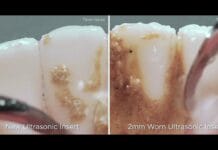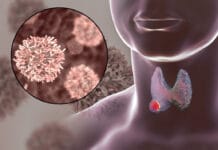The field of nanodentistry is progressing rapidly from theory to practice as dental researchers seek ever more precise methods for dentists to maintain and improve oral health.
Nanotechnology has been at the forefront of scientific advances for decades. It has not had, until recently, viable clinical applications. Nanotechnology is based on manipulating matter at the cellular level. The term nano is derived from the Greek word meaning “dwarf.” Nanotechnology is based on employing nanoparticles that are between 1 and 100 nanometers in size. Nanoparticles in nano solutions enable clinicians to deliver precise, targeted diagnosis and treatment.
There are two primary ways in which nanotechnology has translated well into the practice of dentistry: improved imaging through the use of nanoparticles and the use of nanorobots or “nanobots.”
In the case of imaging, the periodontal probe has been considered the best method for detecting gum disease by measuring pockets where the gums have shrunk from the teeth. While considered the best method, it is also invasive, painful, and unreliable. Science Daily reported in September 2017 of the work being carried out by Jesse Jokerst at UC-San Diego involving the use of an oral rinse composed of squid ink, cornstarch, and water as a contrast agent for a photoacoustic ultrasound. Squid ink contains a nanoparticulate substance that absorbs light. The photoacoustic “pulse” from the ultrasound can detect the degree of gum disease in the whole mouth, rather than one tooth at a time, thereby producing a highly accurate diagnosis in less time, with no patient discomfort. At the time of publication, the squid ink oral rinse tasted horrible, and a portable photoacoustic ultrasound was still being developed.
As for nanobots, Science Direct references a study published in The Saudi Dental Journal regarding the use of nano-sized robotics in dentistry. The possibilities are seemingly endless with regard to dentistry. Nanobots are microscopic robots that that are preprogrammed to diagnose and treat oral illnesses with a heretofore unknown precision and accuracy. The tiny, preprogrammed robots can be administered via an oral rinse. Some of the most promising uses of microscopic robots (in addition to nanoparticles) in dentistry and orthodontics are:
- Anaesthetics – Nanobots are delivered to the patient’s gingiva via a colloidal suspension and then controlled by the dentist once they have settled in the pulp. The dentist instructs the robots to shut down all nerve sensation.
- The treatment of oral cancer – Otherwise known as Brachytherapy, tiny metal coated beads called nanoshells are able to selectively destroy tumor cells while leaving healthy tissue intact.
- Adhesives – Nanoparticles are mixed in a nano solution which is highly homogenous, therefore ensuring a perfect mixture of bonding material with improved strength. Nanoparticles are currently used in the resin-based reconstruction procedure.
- Sterilization – For use in the sterilization of instruments; there are many commercially available nano solutions. They purport to be hypoallergenic, environmentally friendly, non-corrosive, and non-staining while killing a broad spectrum of organisms.
- Bone replacement – Since successful bone generation is dependent upon the available surface area of the tooth, bone growth can be expedited with nanoscale placements of material That greatly improve the surface topography of the tooth.
- Permanent cure for sensitivity – Based on the same idea as the clinical application of anesthesia, nanobots can be selectively placed in dental tubules to permanently block them from causing ongoing sensitivity.
- “Dentifribots” as a dentifrice to destroy bacteria – These are delivered by a toothpaste or mouthwash and are so effective at targeting all subgingival surfaces to destroy pathogenic bacteria, they make dental floss seem prehistoric. The “dentifribot” is technically a mechanical structure that destroys itself after ingestion.
There are many commercially available applications of nanotechnology in dentistry, especially as relates to reconstruction procedures and instrument sterilization. The more technologically advanced applications, such as cancer treatment are still subspecialties. Still others, such as squid ink are not FDA approved–but show promise.
Nanodentistry, while amazing, is not without controversy. There are conflicting views as to toxicity in living tissue. While experimental results in vitro have produced astounding results, not all experiments have successfully translated to clinical applications.











